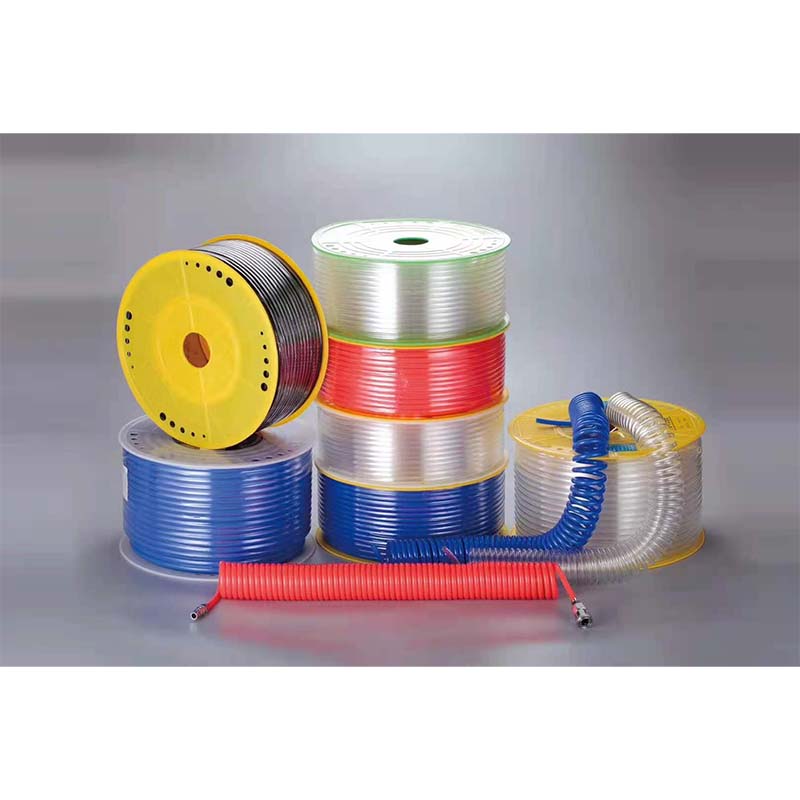flexible pneumatic tubing
The Versatility of Flexible Pneumatic Tubing
Flexible pneumatic tubing is an essential component in many industrial and commercial applications. Its versatility and adaptability have made it a preferred choice for transporting air and other gases within pneumatic systems. In this article, we will explore the features, applications, and benefits of flexible pneumatic tubing.
One of the primary advantages of flexible pneumatic tubing is its ability to bend and adapt to various configurations without compromising flow efficiency. This flexibility allows installers to create complex layouts, accommodating tight spaces and avoiding unnecessary bends that could lead to pressure loss in more rigid piping systems. Made from materials like polyurethane, nylon, and PVC, these tubes are designed to withstand various pressures and temperatures, making them suitable for a wide array of environments.
Applications of flexible pneumatic tubing are vast and diverse. In manufacturing, pneumatic systems are integral for powering tools, moving materials, and automating processes. For instance, in the automotive industry, flexible pneumatic tubing is used extensively for powering robots that assemble parts, operate paint sprayers, and manage conveyor systems. Similarly, in food processing, these tubes facilitate the transportation of air to pneumatic actuators that control packaging machines, ensuring efficiency and speed in production lines.
The healthcare sector also benefits from flexible pneumatic tubing, where it is utilized in medical devices and equipment. Respiratory machines, for example, rely on these tubes to transport air to patients, ensuring safe and effective delivery of oxygen. Moreover, in laboratory settings, flexible tubing is crucial for gas chromatography and other applications that require precise gas flow management.
flexible pneumatic tubing

Another significant benefit of flexible pneumatic tubing is its ease of installation and maintenance. The lightweight nature of the tubing allows for quick handling and installation, reducing downtime in operations. Additionally, its resistance to wear and tear elongates its lifespan, leading to lower replacement costs and fewer maintenance requirements.
Moreover, manufacturers of flexible pneumatic tubing offer a variety of sizes, colors, and material specifications, allowing companies to select tubing that meets their specific operational needs. This customization is particularly beneficial in industries where color-coding tubes can enhance safety and efficiency by preventing cross-connections.
However, it is essential to consider factors such as compatibility with specific gases, operating pressures, and temperatures when selecting flexible pneumatic tubing. Choosing the right type ensures optimal performance and safety within pneumatic systems. Proper selection and installation minimize the risk of leaks, which can lead to inefficiencies and potential hazards in the workplace.
In conclusion, flexible pneumatic tubing serves as a backbone in many pneumatic systems across various industries. Its ability to adapt to complex layouts, coupled with its durability and ease of installation, makes it an invaluable resource for enhancing operational efficiency. As industries continue to innovate and demand better performance from their equipment, the role of flexible pneumatic tubing will undoubtedly remain critical, proving that flexibility is not just a design feature but a necessity in the ever-evolving landscape of industrial applications.
-
Unrivaled Performance and Applications of PU Pneumatic Hoses and TubesNewsJun.11,2025
-
The Transparent World of Industrial Tubing and Hosing SolutionsNewsJun.11,2025
-
The Intricate World of Pneumatic Conduits: Tubes and HosesNewsJun.11,2025
-
The Dynamic Landscape of Pneumatic Conduits: Unraveling Key ComponentsNewsJun.11,2025
-
The Diverse Applications and Significance of Transparent PVC TubingNewsJun.11,2025
-
High - Pressure Pneumatic Tubing and Systems: An In - Depth LookNewsJun.11,2025














